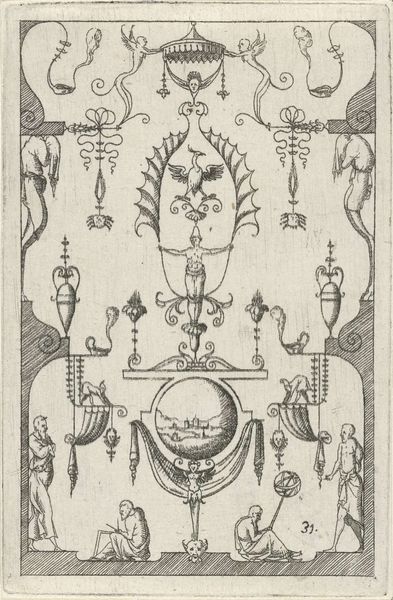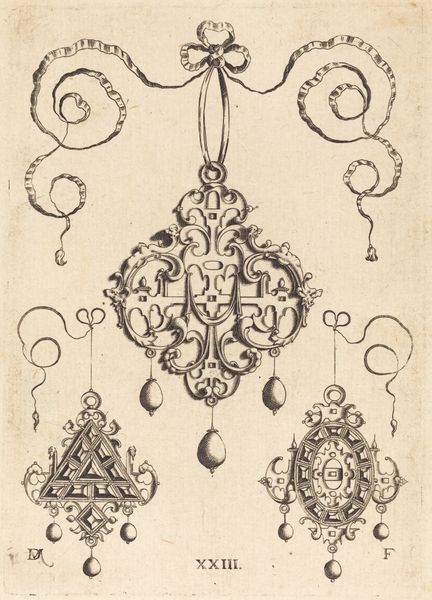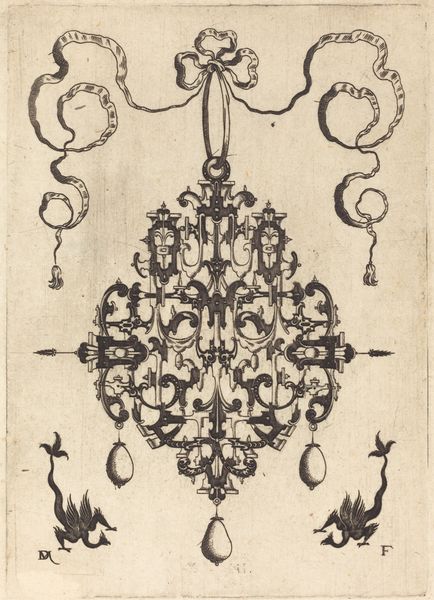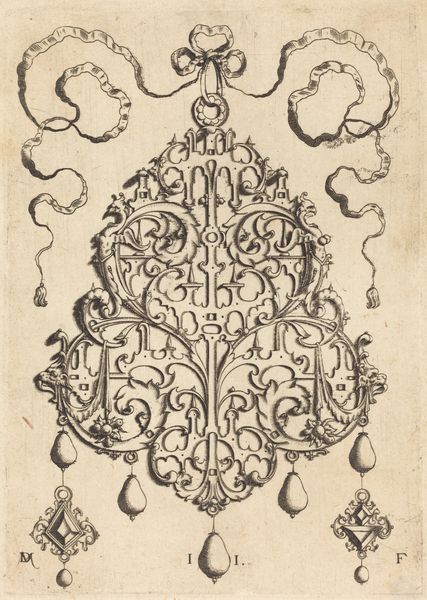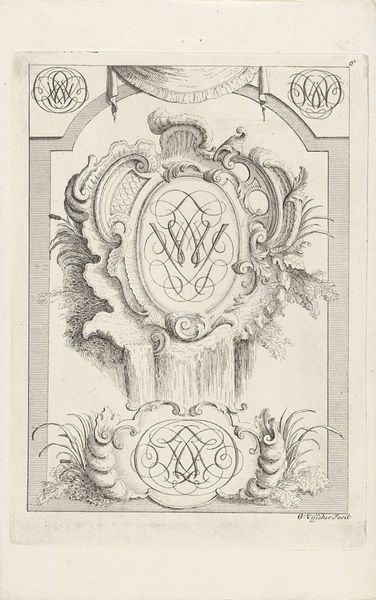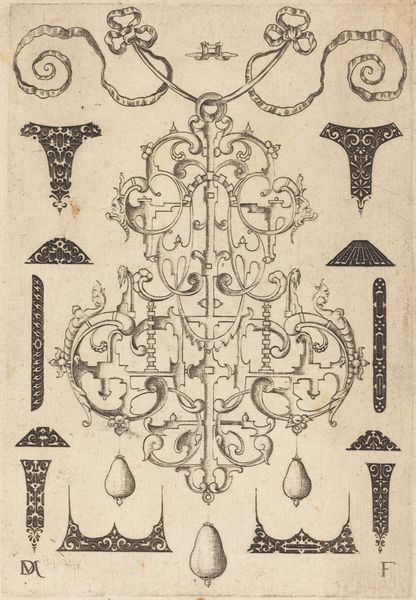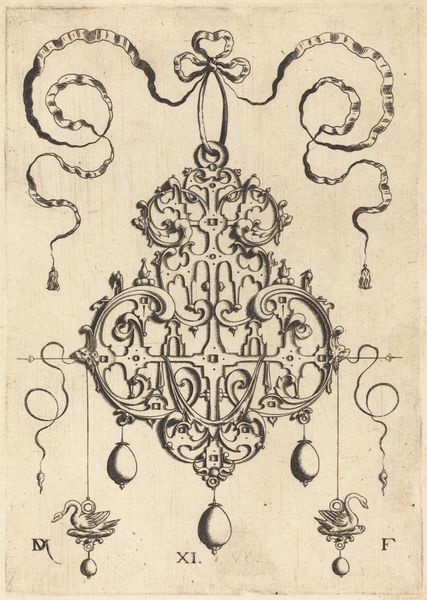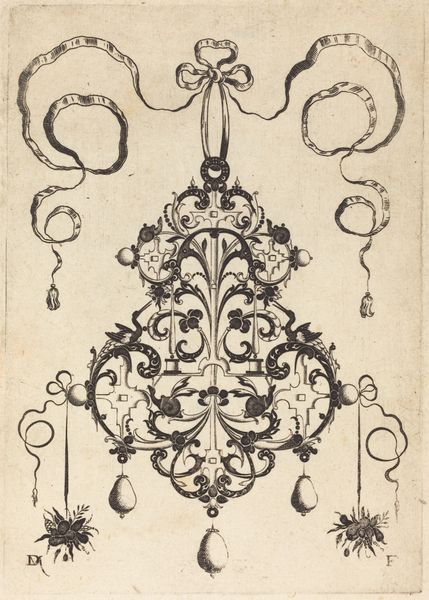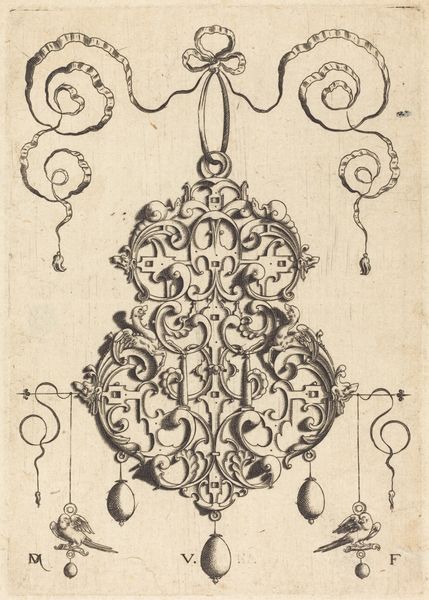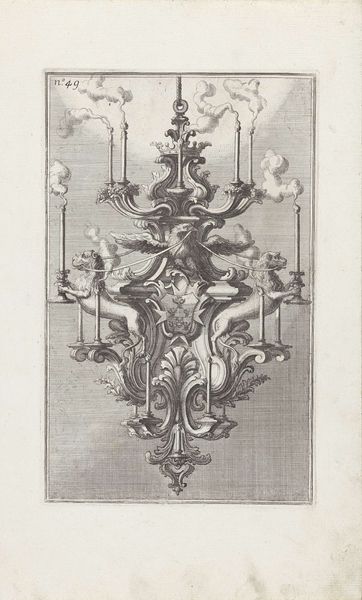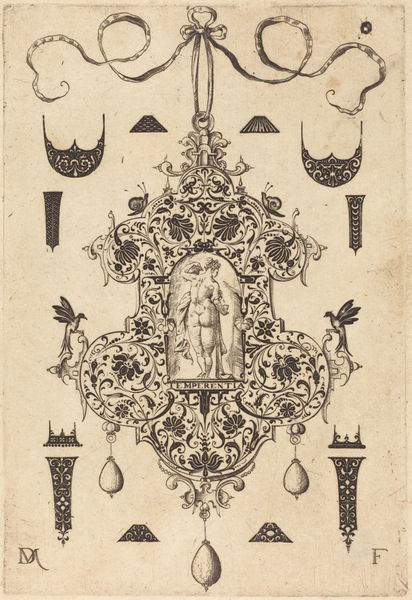
Rechter wapenrand van een kaart van het Hoogheemraadschap van Schieland (bovenste deel) 1660
0:00
0:00
drawing, print, etching, ink
#
drawing
#
baroque
# print
#
etching
#
ink
Dimensions: height 500 mm, width 300 mm
Copyright: Rijks Museum: Open Domain
Curator: What a strikingly precise image! I understand that we're looking at "Rechter wapenrand van een kaart van het Hoogheemraadschap van Schieland (bovenste deel)" by Johannes Vinckboons, dating back to 1660. It's housed here at the Rijksmuseum. The etching is composed of ink on paper, isn’t it? Editor: Yes, that's correct. The first thing that strikes me is the artist's meticulous approach. You can almost feel the quality of the paper, the crispness of the etching process, and the social position of this armorial. Curator: Precisely. This isn't simply a decorative piece; it's embedded with meaning. The coat of arms anchors the image within a network of social power. I see three stars in the shield, can you offer any thoughts on that, perhaps about status? Editor: It's about production. Consider how materials like ink and paper were produced, who had access to these technologies in 17th-century Netherlands, and how these decisions influenced the meaning the image conveys. The etching suggests a method to rapidly circulate information about water management infrastructure. This imagery speaks to the infrastructure necessary to organize labor itself. Curator: Water management indeed – Schieland being that area near Rotterdam that faced constant threats of flooding. So this seemingly decorative cartouche actually represents a complex struggle between the human imposition on the landscape and the natural elements. But I want to consider the use of Baroque ornamentation: those flowing ribbons and acanthus leaves are more than just fancy decorations, wouldn't you say? Editor: Well, certainly, ornamentation served specific function but also as status symbols. But again, to understand Baroque ornamentation, one should understand labor itself. The print would reach a vast audience beyond the place of its making. Etchings were also relatively reproducible. That’s what truly differentiates it from craft. Curator: That mass reproducibility is also important considering that Hoogheemraadschap literally meant “High Water Board” suggesting the need for collectivity during this historical period. The print thus acted as a visual contract – reminding every viewer the socio-economic responsibilities vis-à-vis geography, perhaps. Editor: A fitting conclusion! Curator: It adds a crucial layer to this map fragment, linking aesthetic choices with socio-political and material realities of the period.
Comments
No comments
Be the first to comment and join the conversation on the ultimate creative platform.
